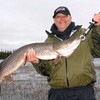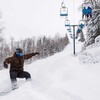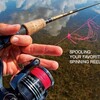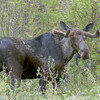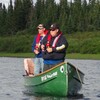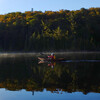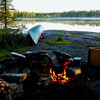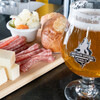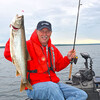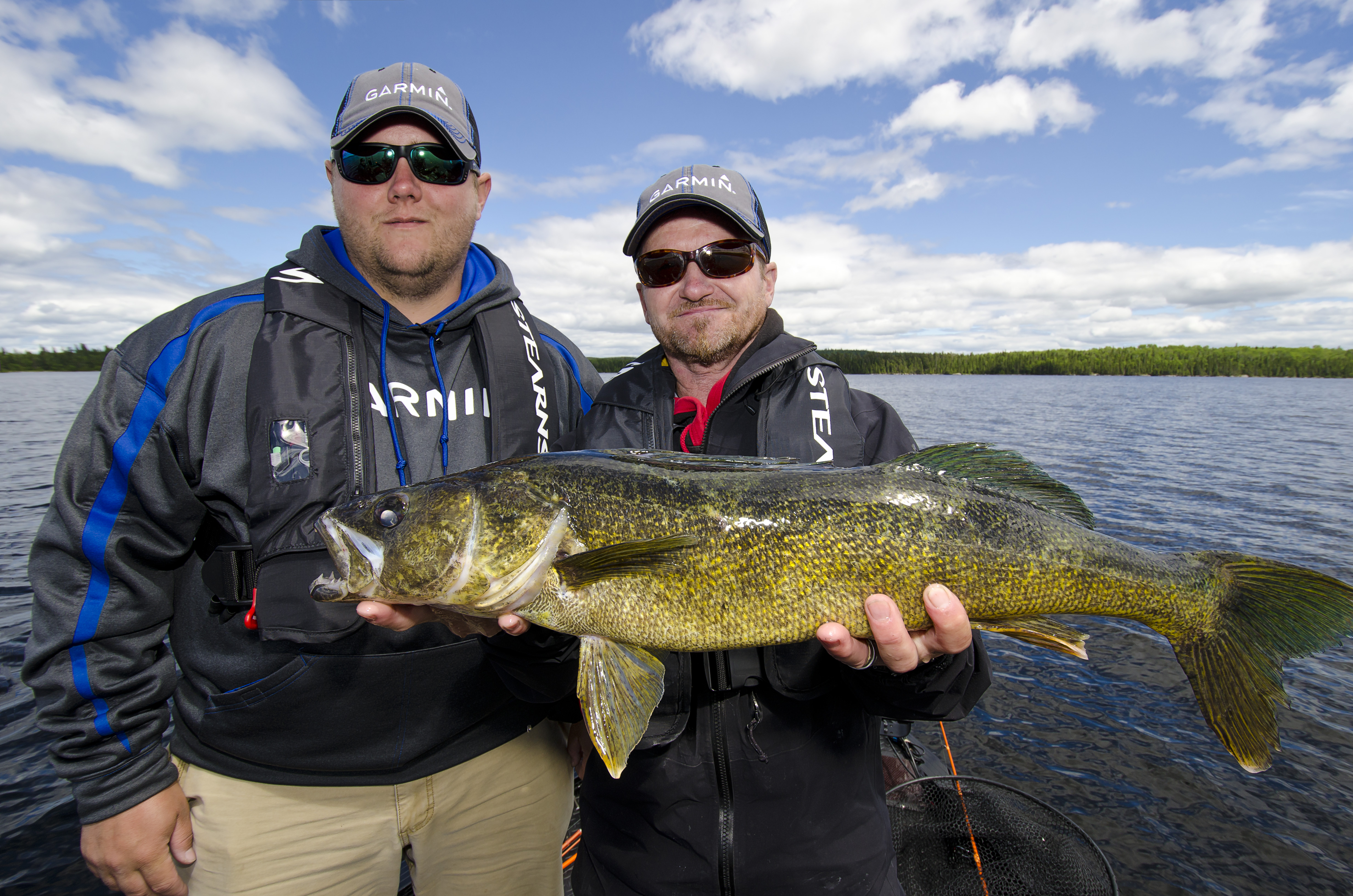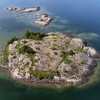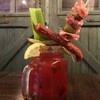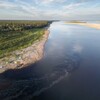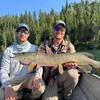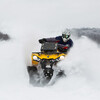
Minnows, Leeches or Nightcrawlers?

During the months of June, July and August, countless anglers head north to sample the world-class walleye fishing found across Ontario's Algoma Country. On the minds of each and every one of those anglers is an important question: which live bait produces best on walleye?
The three most popular live baits for walleye fishing are hands down minnows, leeches and nightcrawlers. Each of these baits has a time and place in Algoma Country.
Which Fishing Bait Works Best In June
Ontario walleye spend most of their time in shallow water during the month of June. The tips of points, submerged and emergent weed edges, saddles between islands, near shore reefs and the mouth of rivers pouring into a main lake are classic spots to find walleye.
When walleye are found in shallow water (4 to 15 feet), casting jigs tipped with minnows is a great way to reach out to fish without spooking them. A 1/8- to 1/4-ounce jig is perfect for casting applications.
The biggest problem with casting a jig-and-minnow combination is keeping the bait on the hook. A simple trick will ensure that the minnow stays put on the jig.
When baiting up the jig run the hook point into the minnow's mouth and back out just behind the minnow's head. Next, take a pair of scissors and cut a few 1/8-inch thick chunks from a soft plastic twister tail. Take one of these "washer-like" chunks of plastic and push it over the hook point and past the barb.
This tiny piece of plastic prevents the hook from backing out of the minnow and allows the angler to make many casts without fear of casting off the bait.
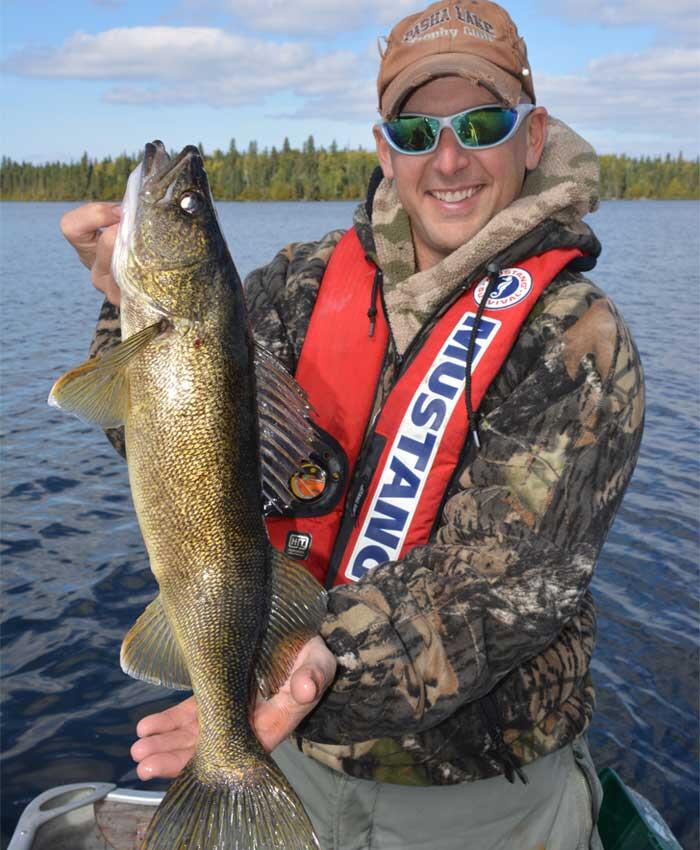
It’s no secret that walleye are readily caught using live bait. Which bait is best often depends on the time of year, how deep the fish are found and what presentation is being used. Photo credit: Mark Romanack
Which Fishing Bait Works Best In July
July finds Ontario walleye starting to transition into deeper water. Often, the best July fishing spots are deeper portions of the same structure and cover that these fish favoured in June. This is especially true of older, larger and more mature walleye. Waters from 10 to 25 feet deep become the "sweet spots" to seek out July walleye.
Slip sinker rigs baited with a medium-sized leech become an important tool for finding and catching walleye at this time of year. Leeches are easier to keep alive in July than minnows, and this bait is absolutely deadly when back-trolled on a slip sinker rig.
A good slip sinker setup consists of a 3/8- to 1/2-ounce slip sinker, a 36-inch leader of 8-pound test fluorocarbon line, a No. 10 Spin-n-Glo body and a No. 2 beak style hook. The Spin-n-Glo serves two important purposes. These foam bodies have a pair of wings that create fish-attracting flash in the water. Secondly, the buoyancy of the foam helps to keep the bait up off the bottom, where walleye can see it and snags are minimized.
Back-trolling along the deep water edge of points or drop-offs is the ideal way to fish live bait rigs. Carry some marker buoys in the boat and toss one when a fish is hooked. This will provide a reference for making additional passes.
Which Fishing Bait Works Best In August
By August, the dog days of summer have set in, and walleye seek sanctuary in the deeper and cooler waters of the main lake. It's at this time of year that offshore sunken reefs and islands often attract staggering numbers of walleye. These mid-lake structures are rarely marked on fishing maps, so the only practical way to find them is to use the boat to run a grid pattern in open water while watching the sonar closely for places where the bottom rises up quickly.
I recommend cruising at a pretty good speed while hunting for submerged reefs and then slowing down to take a closer look when a reef is located. Using sonar, scan the top of the reef for signs of fish and baitfish. The beauty of deep-water fishing is that walleye can't hide. Sonar is not only critical for finding the reefs, but it will also allow anglers to determine if fish and baitfish are at home.
Depending on the lake, these mid-lake structures could be found in 20, 30, 40 or even 50 feet of water! Say, for example, you're cruising over a 40-foot flat and the bottom suddenly rises up to 20 feet and then drops back down to 40 feet. The top of that reef is going to be a walleye fishing hot spot, especially if the reef is large enough to provide ample cover and food for hungry walleye.
A two or three-ounce bottom bouncer sinker married up to a two-hook nightcrawler harness is hands down the best way to fish deep water reefs. The larger the crawlers, the better, but the blades used on these rigs should be modest in size.
A No. 2- or 3-sized Colorado blade is ideal for fishing a bottom bouncer rig in summer. This rig can be back-trolled, forward trolled or drifted into position. When a fish is hooked, toss a marker buoy and make more passes through the same area. In August, walleye often school up on key reefs. It's common for literally thousands of walleye to show up on a single mid-lake reef.
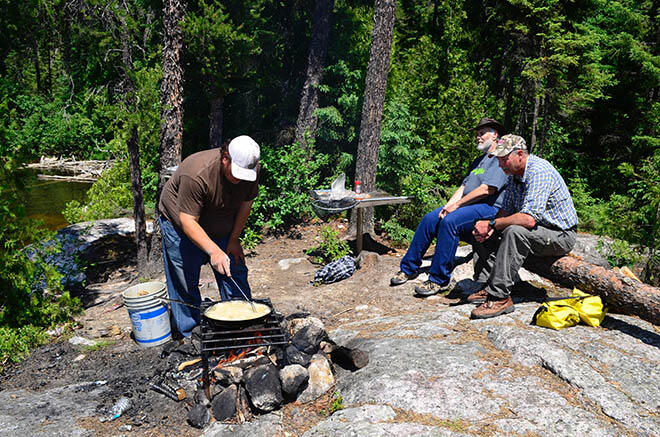
Summing It Up
Countless walleye will be caught in Ontario during June, July and August. The rig and live bait that work best depend a lot on the time of year and how deep the fish are found. Jigs, live bait rigs and bottom bouncer rigs are three of the best ways to target Ontario's bottom-loving walleye.
Important Live Bait Facts For Canada
- You cannot bring minnows or leeches into Canada.
- You can bring nightcrawlers (dew worms) into Canada, however, they must be packed in artificial bedding, not natural soil.
- Ontario Fishing Regulations for Live Bait
- Find out what you can and cannot bring into Canada at cbsa-asfc.gc.ca
To ease wait times at the border, it's a good idea to purchase your live bait in Canada. There are several bait and tackle shops in Algoma Country that carry minnows, leeches and nightcrawlers, packed and ready for your trip. Check with the fishing lodge or cottage resort for more information about purchasing live bait during your stay.
Recommended Articles

The Group of Seven in Algoma

9 Facts to Know about the Agawa Canyon Tour Train


